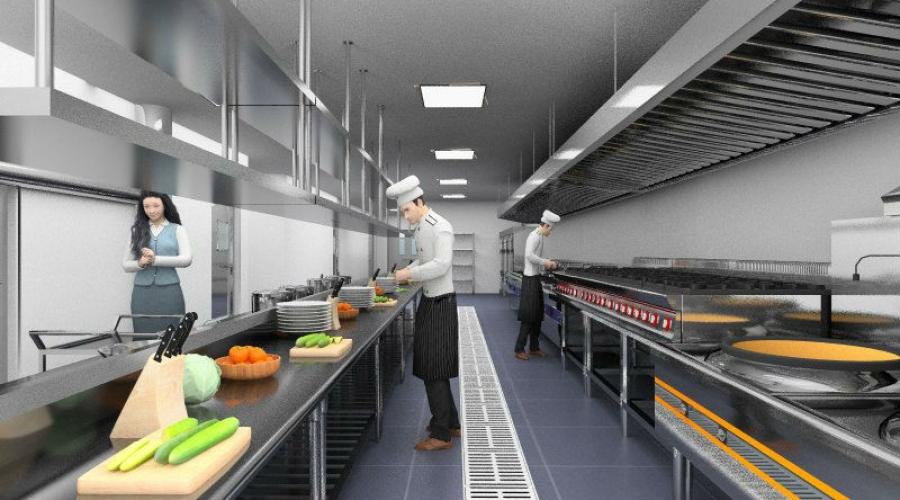1. In order to ensure the timely production of the cooking kitchen and meet the quality requirements of food, fragrance and taste, the cooking kitchen should be close to the restaurant corresponding to its flavor. Although some restaurants are limited by the site or building structure and pattern, the processing or Dim sum of the kitchen, or even the production room of cold dishes or barbecues, may not be on the same floor as the restaurant, but the cooking room must be on the same floor as the restaurant. Considering the efficiency and safety of dish delivery, especially for large-scale production such as meetings and teams, it may be necessary to use cart services. Therefore, the cooking kitchen and restaurant should be on the same level without any drop or steps.
2. The cooking kitchen must have sufficient refrigeration and heating equipment
The entire room temperature of the cooking kitchen (without installing air conditioning or fresh air equipment) is normally between 28 and 32 degrees Celsius, which poses many difficulties for the quality storage of raw materials. Therefore, the ingredients used for ingredients in the cooking kitchen need to be stored in refrigeration equipment at all times to ensure the quality of the ingredients and the safety of the product. During the interval between meals and after dinner, the seasonings, soup, raw materials, semi-finished products, and finished products must be stored at a nearby low temperature. Therefore, it is necessary to design and equip sufficient refrigeration equipment. Similarly, the cooking kitchen is responsible for the cooking and production of various dishes in the corresponding restaurant. Therefore, in addition to being equipped with fryers that are suitable for the catering scale, restaurant operation, and restaurant flavor, a certain amount of equipment such as steaming, frying, frying, grilling, and stewing should also be equipped to meet the production needs.
3. The smoke exhaust effect is better
Cooking the kitchen generates a large amount of oil smoke, turbidity, and emitted steam every day. If not discharged in a timely manner, it can linger in the kitchen and even flow back into the restaurant, polluting the dining environment of guests. Therefore, above equipment such as stoves, steamers, steamers, and ovens that generate oil smoke and steam, strong smoke extraction and exhaust facilities must be equipped, striving to achieve 50 to 60 air changes per hour in the cooking kitchen, so as to truly create a negative pressure zone in the kitchen, creating a fresh air environment and facilitating the judgment of dish taste by cooking personnel.
4. Convenient transfer of ingredients and cooking materials
The preparation and cooking should be in the same open workspace, and the distance between the preparation and cooking area should not be too far to reduce the transmission of fatigue. The dishes that guests have booked in advance should have a certain workbench or stand after preparation, so that they can be temporarily stored for stir frying.
Do not transfer all dishes that have already been prepared onto the cooking and serving table (punch table) to avoid confusion in the order of serving.
5. It is necessary to set up a venue and specialized equipment for emergency killing of fresh food
With consumers placing greater emphasis on the freshness, speed, and rhythm of the ingredients, and the recognition of fresh ingredients such as sea, river, and game ordered by customers, most customers hope to cook and serve them in a short period of time.
Therefore, for the slaughter of fresh raw materials, it is necessary to design and configure a dedicated water tank and workbench that are convenient to operate, to ensure that their operation is still very convenient during busy meal periods. The production of sashimi raw materials requires strict hygiene and low temperature environment. In addition to strict operational standards for production personnel and their operations in management, the above factors should also be fully considered in the design and equipment allocation of commercial kitchens. Set up relatively independent homework rooms and create


